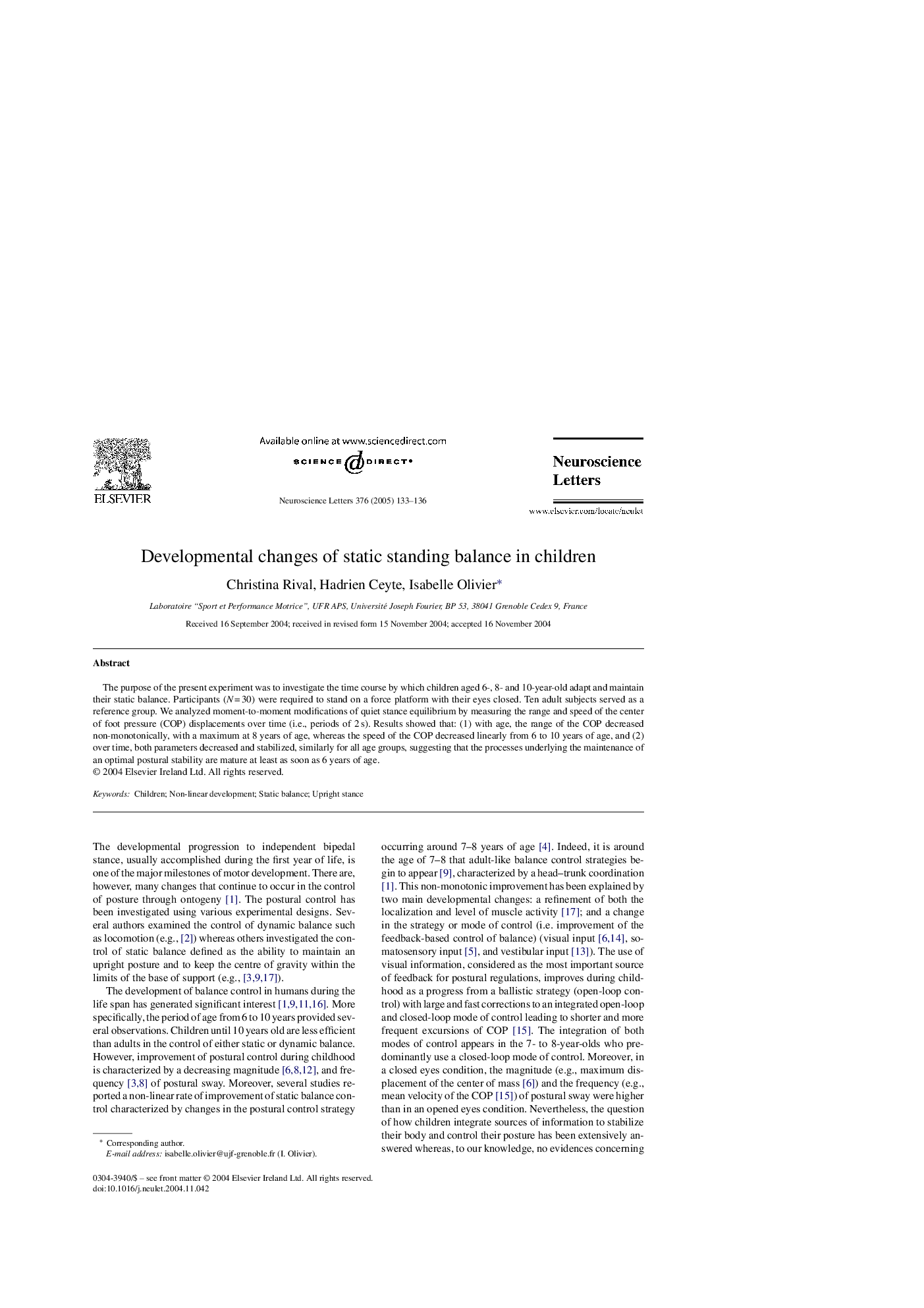| Article ID | Journal | Published Year | Pages | File Type |
|---|---|---|---|---|
| 9429469 | Neuroscience Letters | 2005 | 4 Pages |
Abstract
The purpose of the present experiment was to investigate the time course by which children aged 6-, 8- and 10-year-old adapt and maintain their static balance. Participants (NÂ =Â 30) were required to stand on a force platform with their eyes closed. Ten adult subjects served as a reference group. We analyzed moment-to-moment modifications of quiet stance equilibrium by measuring the range and speed of the center of foot pressure (COP) displacements over time (i.e., periods of 2Â s). Results showed that: (1) with age, the range of the COP decreased non-monotonically, with a maximum at 8 years of age, whereas the speed of the COP decreased linearly from 6 to 10 years of age, and (2) over time, both parameters decreased and stabilized, similarly for all age groups, suggesting that the processes underlying the maintenance of an optimal postural stability are mature at least as soon as 6 years of age.
Keywords
Related Topics
Life Sciences
Neuroscience
Neuroscience (General)
Authors
Christina Rival, Hadrien Ceyte, Isabelle Olivier,
